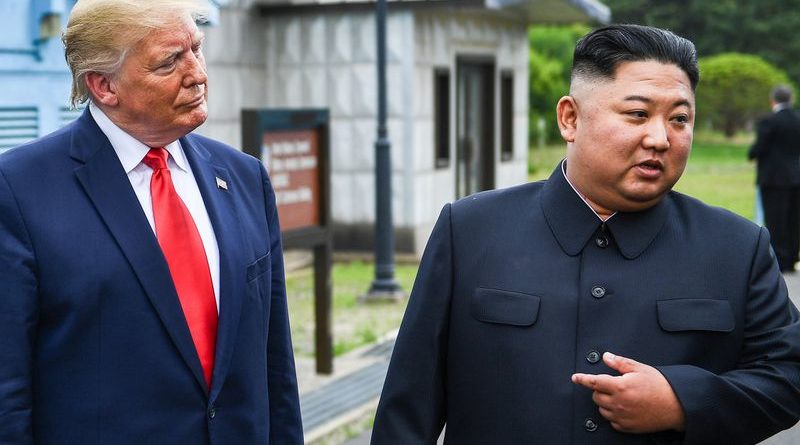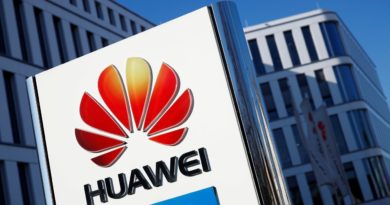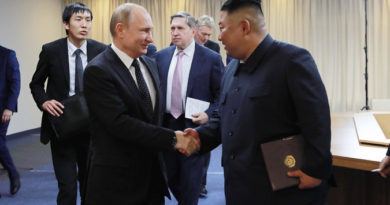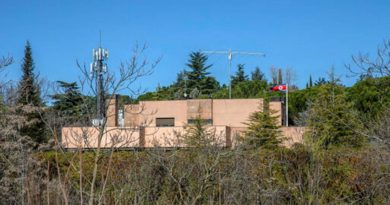Trump’s “historic” Visit
On Sunday, 30 June, Donald J. Trump became the first sitting American president to step foot inside the DPRK. This came moments after KJU stated that he would be making history by crossing the Military Demarcation Line and walking into the North. Critics say President Trump is legitimizing the atrocious Kim regime, while supporters are saying that he is bringing peace to the Peninsula. But was this more than just a photo opportunity and who was the real audience for this “summit?”
What is Moon’s Status?
In the week leading up to the G20 summit, the Moon Administration was trying desperately to secure an inter-Korean summit before Trump’s visit to the Peninsula. In hindsight, it seems they knew of Trump’s plans and were hoping to gain some political capital by appearing to lay the groundwork for the third Trump-Kim meeting, though the Moon Administration was largely ignored by the Kim regime. In fact, the South’s attempts at expanding inter-Korean cooperation have been rebuffed by the North with the North Koreans refusing to participate in the celebrations marking the first anniversary of the Panmunjom Declaration or in working-level meetings at the Kaesong liaison office. And despite accompanying President Trump to the DMZ, President Moon was in the background and did not participate in the photo op or the meeting between Trump and Kim.
President Moon has served as the chief representative of KJU to the international community, but after a rapport was established between Trump and Kim he has been cast aside by both men. However, having staked his presidency on the prospect of improvement in inter-Korean relations, Moon has found himself unable to regroup and form a new strategy moving forward. By this point, President Trump and — more importantly — his advisors know what to expect from President Moon, and I don’t expect anything to change in that regard for the rest of Moon’s term.
What are Trump’s Motivations?
President Trump has shown himself to be largely ignorant with respect to Northeast Asian geopolitics. He has questioned why the US gave Japan a security guarantee without the Japanese entering into a reciprocal agreement, reflecting his incomprehension of the region’s fears of Japanese re-militarization. Meanwhile, the trilateral relationship between the US, Japan, and the ROK has continued to disintegrate culminating in the recently announced Japanese ban on high-tech exports to the ROK and Prime Minister Abe meeting with 16 world leaders at the G20, but not bothering to sit down with President Moon. US leadership in this arena has been extremely lacking.
Despite the above, President Trump knows his domestic audience who, unfortunately, are also largely ignorant of Northeast Asian geopolitics. Fox News recently stated that the current President of the ROK is Kim Il Sung.
It is interesting to watch the progression of Fox News from chastising President Obama for being open to meeting with the North Koreans to praising President Trump’s historic meetings with the North Koreans to secure peace.
It is equally interesting to watch the rest of the media and the Democrat establishment take the opposite position. While I agree with the Democrat establishment’s take on the Trump-Kim meeting, I do not believe their analyses are based in anything other than partisan politics. And the general public can see these political motivations as well. A plurality of registered voters surveyed by The Hill indicated that the Trump-Kim summit was the most significant news item of 2018, despite the Kavanaugh hearings, the Mueller investigation, and the border crisis, among other issues. And Trump’s actions in this space have forced the Democrats to take the awkward position of advocating a more hawkish approach to international politics, while at the same time criticizing Trump’s withdrawal from the JCPOA. Trump’s photo op at the DMZ once again allowed him to overtake the news cycle following the Democrat primary debates with very minimal cost to himself.
What are Kim’s Motivations?
The North Koreans have expressed their growing frustration with denuclearization talks by issuing threatening statements, launching SRBMs, and refusing to engage with the South Koreans at all. And throughout the process, the DPRK has increased its nuclear arsenal by at least 10 more weapons, expanded ICBM bases on the border with the PRC, and appears to be constructing another Sinpo-class ballistic submarine. Further, the DPRK maintains undisclosed uranium enrichment sites, but was only willing to give up parts of Yongbyon in exchange for sanctions relief. These are not the actions of a state that wishes to denuclearize, rather, these are the actions of a state that wants to be accepted as a nuclear-armed member of the international system. So, why bother with the photo op or promise to continue working-level negotiations?
The North Koreans have showed that they are continuing to develop, expand, and deploy their missile systems and continued negotiations provide the cover needed to further this process. Additionally, KJU recognizes the political capital invested by both Trump and Moon in the denuclearization process and understands that he has the leverage in these talks. The DPRK has existed for many decades beyond the bounds of the international system and it is not desperate for a deal now. Further, KJU does not have the constraints of upcoming elections that Trump and Moon are currently facing. But, to be sure, KJU does face domestic constraints within the Party and the military apparatus that will be appeased by his saving face with this photo op. President Trump requested face time with the Supreme Leader and entered the DPRK to make that happen; this is a major propaganda win for KJU.
Conclusion
At this point, my assessment is that the best-case outcome of working-level negotiations will be lip service to denuclearization followed by the “good-enough deal” advocated by the DPRK and the Jusapa faction of the ROK. The DPRK has no incentive to give up Yongbyon, Kangsong, and other undisclosed sites without receiving the assurance that USFK will withdraw from the Peninsula. Given President Trump’s lack of interest in the region and his base’s views on international engagement, I believe it is probable that Trump will accept a “good-enough” deal before the 2020 elections. I expect this issue to become a major focus point of the general elections, though there won’t be much daylight between the positions if Bernie Sanders is the Democrat nominee.




